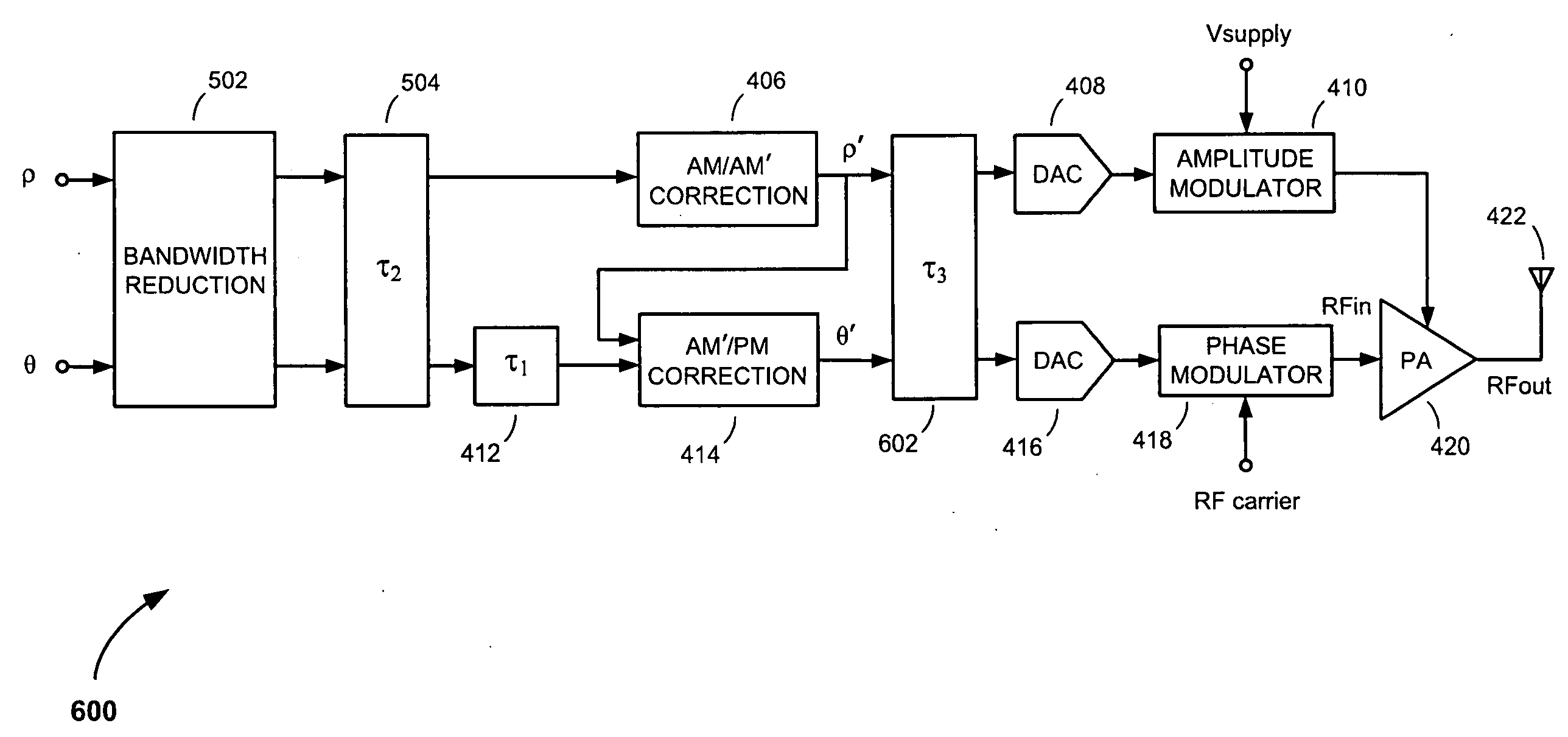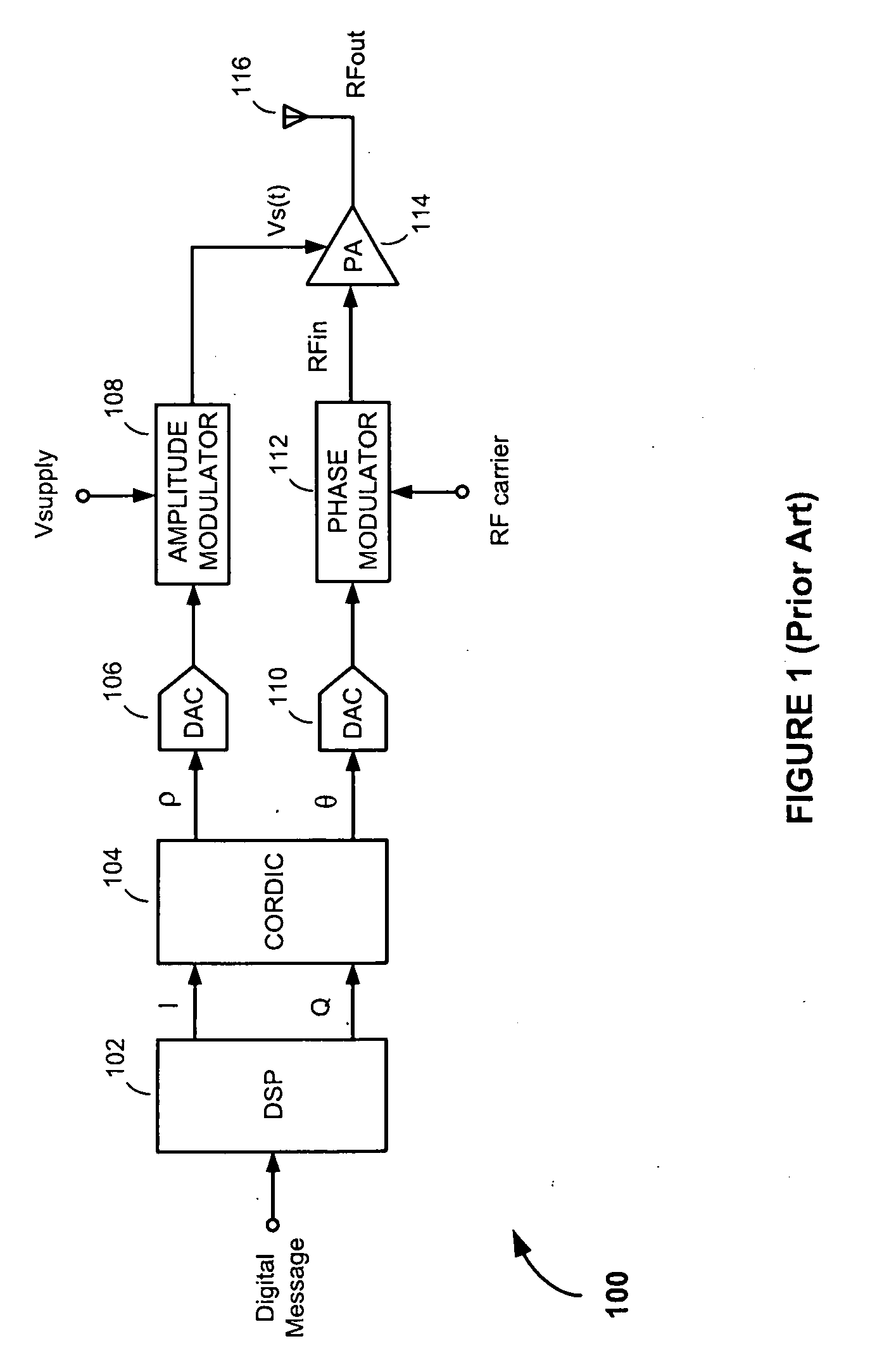Time alignment methods and apparatus for polar modulation transmitters
a time alignment and transmitter technology, applied in the field of communication transmitters, can solve the problems of difficult to comply with out-of-band noise limitation standards, inefficient conversion of direct current (dc) power, and difficulty in the design of any type of transmitter, and achieve the effect of reducing bandwidth
- Summary
- Abstract
- Description
- Claims
- Application Information
AI Technical Summary
Benefits of technology
Problems solved by technology
Method used
Image
Examples
Embodiment Construction
[0027]Referring to FIG. 4, there is shown a polar modulation transmitter 400, according to an embodiment of the present invention. The polar modulation transmitter 400 comprises a digital signal processor (DSP) 402, a Coordinate Rotation Digital Computer (CORDIC) converter 404; an amplitude modulation (AM) path including an amplitude modulation to amplitude modulation (AM / AM′) correction circuit 406, a first digital-to-analog converter (DAC) 408 and an amplitude modulator 410; a phase modulation (PM) path including a first delay element 412, an amplitude modulation to phase modulation (AM′ / PM) correction circuit 414, a second DAC 416 and a phase modulator 418; a power amplifier (PA) 420; and an antenna 422.
[0028]The DSP 402 operates to generate rectangular-coordinate in-phase and quadrature phase (i.e., I and Q) signals from bits in an incoming digital message to be transmitted. The I and Q signals are formatted in accordance with a predetermined modulation format, pulse-shaped to r...
PUM
 Login to View More
Login to View More Abstract
Description
Claims
Application Information
 Login to View More
Login to View More - R&D
- Intellectual Property
- Life Sciences
- Materials
- Tech Scout
- Unparalleled Data Quality
- Higher Quality Content
- 60% Fewer Hallucinations
Browse by: Latest US Patents, China's latest patents, Technical Efficacy Thesaurus, Application Domain, Technology Topic, Popular Technical Reports.
© 2025 PatSnap. All rights reserved.Legal|Privacy policy|Modern Slavery Act Transparency Statement|Sitemap|About US| Contact US: help@patsnap.com



